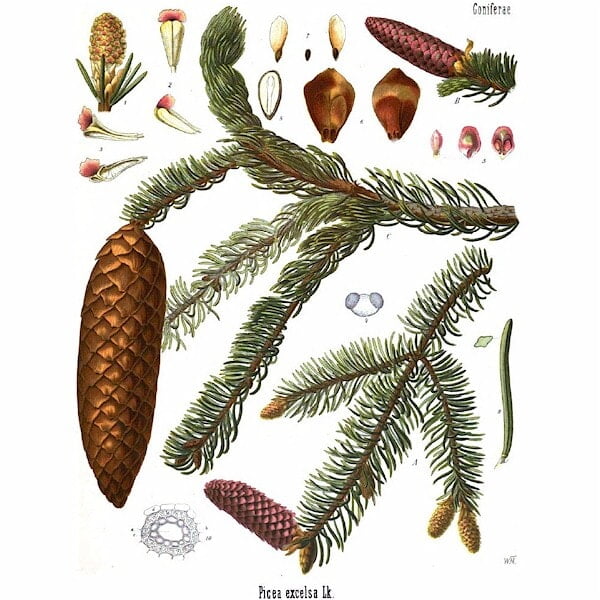Facts about Norway Spruce

Common Name(s): Norway Spruce, European Spruce, German Spruce
Scientific Name: Picea abies
Distribution: Northern and central Europe
Tree Size: 115-180 ft (35-55 m) tall, 3-5 ft (1-1.5 m) trunk diameter
Average Dried Weight: 25 lbs/ft3 (405 kg/m3)
Specific Gravity (Basic, 12% MC): .32, .41
Janka Hardness: 380 lbf (1,680 N)
Modulus of Rupture: 9,130 lbf/in2 (63.0 MPa)
Elastic Modulus: 1,406,000 lbf/in2 (9.70 GPa)
Crushing Strength: 5,150 lbf/in2 (35.5 MPa)
Shrinkage: Radial: 3.9%, Tangential: 8.2%, Volumetric: 12.9%, T/R Ratio: 2.1
Color/Appearance: Norway Spruce is typically a creamy white, with a hint of yellow and/or red.
Grain/Texture: Norway Spruce has a fine, even texture, and a consistently straight grain.
Rot Resistance: Heartwood is rated as being slightly resistant to non-resistant to decay.
Workability: Easy to work, as long as there are no knots present. Glues and finishes well, though it can give poor (blotchy and inconsistent) results when being stained due to its closed pore structure. A sanding sealer, gel stain, or toner is recommended when coloring Spruce.
Odor: No characteristic odor.
Allergies/Toxicity: Although severe reactions are quite uncommon, Spruce in the Picea genus has been reported as a sensitizer. Norway Spruce in particular has been reported to cause skin irritation and asthma-like respiratory effects. See the articles Wood Allergies and Toxicity and Wood Dust Safety for more information.
Pricing/Availability: Construction grade spruce is cheap and easy to find. Although Norway Spruce is native to Europe, it has also been planted in the northeast, Rocky Mountains, and Pacific coast areas of the United States. Species of construction-grade spruce will vary by locale.
However, Quartersawn billets of instrument-grade Norway Spruce, (frequently sold under more “sophisticated” names such as German Spruce, Yugoslavian Spruce, etc.) can easily exceed the cost of most all domestic hardwoods in terms of per board-foot cost.
Sustainability: This wood species is not listed in the CITES Appendices, and is reported by the IUCN as being a species of least concern.
Common Uses: Paper (pulpwood), construction lumber, millwork, crates, Christmas trees, and musical instrument soundboards.
Comments: None.


